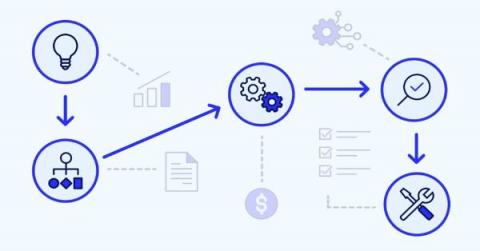Systems | Development | Analytics | API | Testing
BPM
Business Process Improvement: How to Get Started
BPM Insurance Strategies: 4 Steps to Better Processes
7 Compelling Reasons to Choose Cloud BPM (Business Process Management)
Business Process Modeling and Notation (BPMN) Defined: Everything You Need to Know
6 Ways BPM in Banking Improves the Customer Experience
The 2023 banking industry crisis left a lot of us unsettled and more worried than ever about customer retention. We all want to feel confident our customers will continue to choose us, but how? Start by giving them a great experience. Business process management (BPM) can help you meet and exceed customer expectations while improving operational efficiency and managing regulatory compliance. If you're Googling "bpm in banking," you're not alone. It's an approach to improving organizational processes.
4 Benefits of BPM That Impact Your Bottom Line
Businesses are always under pressure to optimize. Often, organizations look to use business process management (BPM) methods to streamline operations. The most direct benefit of this is to reduce costs by decreasing human labor and errors. But the benefits of BPM are much broader. BPM software and BPM methods don’t just allow you to shed the excess in the system—they can help you build real, long-term benefits that pay dividends down the road.
5 Business Process Management Steps to Optimize Any Process
Some processes feel like getting teeth pulled without novocaine. Whether it’s excessive data entry, completing onboarding paperwork for HR, or crafting weekly reports, nearly all businesses have some processes that can be better designed, automated, and optimized. Streamlining these processes can help improve operational efficiency, boost the bottom line, and improve morale for business users.
Business Process Management vs. Workflow: The Difference, Explained
Business process management (BPM) and workflow are both commonly used terms in discussions about business operations. While they’re related, they’re not the same. What’s the difference? Business process management (BPM) is a discipline designed to manage processes across an entire organization, from as small as tracking a team budget to as large as supply chain management for a company. Workflow is how a process is concretely represented in tasks, assignments, decision logic, etc.
Business Process Management Tools: 13 Features to Look For
Every organization, big and small, relies on processes to get work done. Processes are the backbone of your success. But if left unchecked, your processes can spin out of control. That’s why business process management (BPM) tools are so essential. They provide a wide range of coverage to help you develop, automate, optimize, and orchestrate efficient processes.











